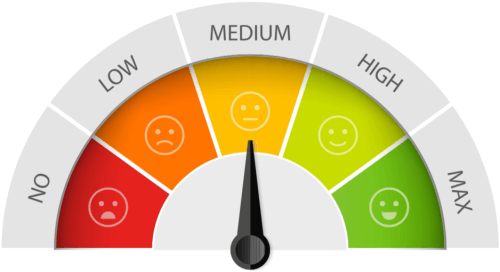Office 365 Adoption: Quantitative vs. qualitative adoption
Last October, Microsoft announced a 10% increase in the price of its Office 2019 on-premise suite. However, according to Microsoft, this perpetual license of MS Office remains functionally lower than Office 365: Office 365 ProPlus remains the “most productive and secure” solution with the “lowest total cost of ownership for the deployment and management” of an Office suite.
Microsoft’s goal is obvious: to make Office 365 ProPlus, E1, E2 and E3 subscriptions more attractive, by creating a real financial incentive for their adoption. But then, is this strategy working?
Where are we really at, in businesses and organizations, with Office 365 adoption, both for quantitative adoption, and, this is certainly the most interesting part of the question, for qualitative adoption?
Office 365 Adoption in Businesses and Organizations – State of Play
 The cloud-centered Office 365 suite was launched more than 8 years ago. Today, Office 365 brings together literally dozens of applications including the Microsoft legacy Applications (such as Outlook, Word, Excel, PowerPoint, Exchange, SharePoint), their online versions, new applications such as OneDrive for storing and sharing files in the Cloud, and software from acquisitions like Skype (now integrated into Teams) or Yammer. Microsoft continues to add new apps to Office 365 such as OneNotes, Flow, Delve, Sway, Planner, People, Calendar, Tasks, Video, Newsfeed…
The cloud-centered Office 365 suite was launched more than 8 years ago. Today, Office 365 brings together literally dozens of applications including the Microsoft legacy Applications (such as Outlook, Word, Excel, PowerPoint, Exchange, SharePoint), their online versions, new applications such as OneDrive for storing and sharing files in the Cloud, and software from acquisitions like Skype (now integrated into Teams) or Yammer. Microsoft continues to add new apps to Office 365 such as OneNotes, Flow, Delve, Sway, Planner, People, Calendar, Tasks, Video, Newsfeed…
In the last two years, Microsoft, with Office 365 has eclipsed all other cloud providers to emerge as the most widely used enterprise cloud service by user count. One out of every five corporate employees uses an Office 365 cloud service. More than 90% of the companies with at least 100 users are using Office 365.
Unlike Google, which is focused on SaaS, Office 365 offers both cloud and on-premise applications. Because it helps them transitioning smoothly to the Cloud, this flexibility is particularly appreciated by organizations of all sizes and most particularly by all former MS Office customers.
In addition, the strengthening of data protection legislation and the increasing demand for “cloud productivity applications” have further increased the Office 365 already strong adoption trend. In the financial or health sectors, for example, the adoption of Office 365 has almost doubled since 2016. In 2018 in EMEA, 64% of financial and 55% of health organizations used Office 365.
Office 365 has a decisive lead in the battle against competing solutions like G Suite. Indeed, Microsoft can rely on their huge base of MS Office customers, for whom the transition to Office 365 can be perceived as a seamless evolution, causing no real disruption to their current environment (although it is not a seamless evolution and it is very disruptive). The disadvantage of this advantage is that MS Office users have long-standing habits in terms of collaborative practices that are not so easy to drop. As a result, the situation regarding the qualitative adoption of Office 365 is sometimes not as idyllic as expected.
Office 365: a true revolution in collaboration?
 One of the main facts that can be drawn about the adoption of Office 365 is that, in the end, collaboration practices have not changed much. Despite the full integration of Office in the Cloud and the provision of many advanced collaboration features (such as real-time document co-editing, advanced sharing and selective synchronization of documents stored on OneDrive), many Office 365 users still stick to their old practices: creating and storing their documents locally and sending them as Outlook attached files.
One of the main facts that can be drawn about the adoption of Office 365 is that, in the end, collaboration practices have not changed much. Despite the full integration of Office in the Cloud and the provision of many advanced collaboration features (such as real-time document co-editing, advanced sharing and selective synchronization of documents stored on OneDrive), many Office 365 users still stick to their old practices: creating and storing their documents locally and sending them as Outlook attached files.
Ideally, when Office 365 users need to share a Word document, they should use OneDrive to get a secure sharing link and benefit from all the advanced collaboration and security features of Office 365 and the Cloud. However, in practice, they often keep saving their documents locally and sending them attached to Outlook emails, depriving themselves, as well as the recipients of their documents, of all the real added value of Office 365. Very often, only a fraction of the Office 365 corporate users really takes benefit of its cloud-related features.
The challenge of breaking habits that have been in place for years, too many new concepts to grasp simultaneously, awkward user interfaces, as well as the lack of time and budget for user training are among the main reasons for the low adoption rate of Office 365 advanced collaboration features.
While Office 365 very strong volume adoption is definitely a reality, its qualitative adoption remains, in comparison, relatively low and really needs to be improved. Some vendors, such as MK Net.Work, have understood this and are offering applications such as Attach2Cloud to accelerate and improve Office 365 qualitative adoption and return on investment in the corporate world, almost automatically.
if you are curious to know more…
Search:
Points of view category
Previous post:
Is Outlook Feeding Shadow IT?
Points of view category
Next post:
Office 365 Adoption: You have to think out of the box!
